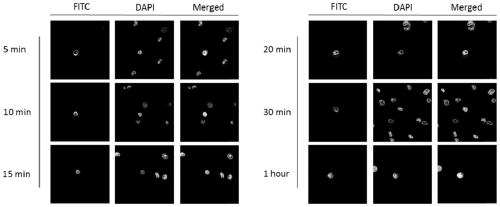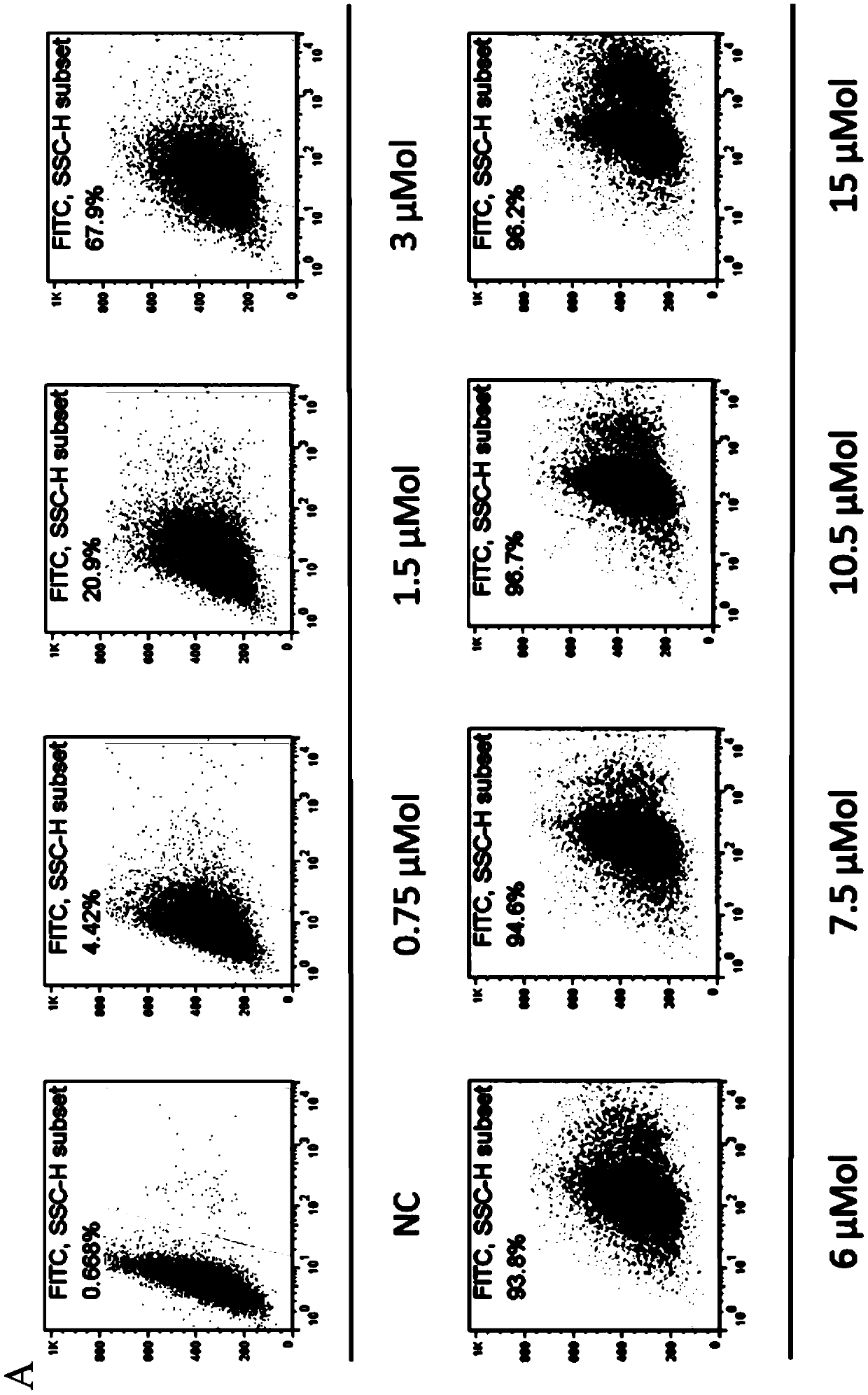A kind of cell penetrating peptide and cell penetrating peptide complex and the application of both
A technology for penetrating peptides and complexes. It is applied to non-active ingredients in medical preparations, peptides, depsipeptides, etc. to reduce complications, increase drug utilization efficiency, and achieve high safety.
- Summary
- Abstract
- Description
- Claims
- Application Information
AI Technical Summary
Problems solved by technology
Method used
Image
Examples
Embodiment 1
[0108] Example 1. Screening, sequence design and synthesis of cell-penetrating peptides
[0109] 1. Screening of tumor cell-penetrating peptides by phage display technology
[0110] Using the tumor cell membrane protein as the target molecule, the "T7Select Human Lung Cancer cDNA Library (Novagen)" was used to enrich the phage bound to the cell membrane protein, and repeated cycles of phage binding, elution and enrichment until the recovery rate of the phage library no longer increased After randomly selecting 48 monoclonal phages and amplifying them, the binding efficiency of each monoclonal phage to the tumor cell membrane protein was detected by a spectrophotometer. Monoclonal phages with a high binding rate to tumor cell membrane molecules were selected. After PCR and sequence analysis, it was determined that the amino acid sequence 1 might be a cell-penetrating peptide, with a total of 54 amino acids, including 29 basic amino acids, accounting for 53.7%. Lysine Acid: arg...
Embodiment 2
[0111] Example 2. Design and preparation of penetrating peptide markers, in vivo and in vitro cell labeling and permeability studies
[0112] 1. Synthesis of penetrating peptide marker FITC-TCPP
[0113] FITC-TCPP was synthesized according to the above amino acid sequence of TCPPs by solid-phase synthesis method (synthesized by Shanghai Qiangyao Biotechnology Co., Ltd., a commercial synthesis company). The direction of synthesis is from C to N-terminus. First, the carboxyl group of the carboxyl-terminal amino acid of the peptide chain to be synthesized is connected to an insoluble polymer resin in a covalent bond structure, and then the amino acid bound to the solid-phase carrier is used as the amino group. The components are deprotected by amino groups and reacted with excess activated carboxyl components to lengthen the peptide chain. Such steps are repeated many times, that is, condensation-washing-deprotection-neutralization and washing-the next round of condensation, and...
Embodiment 3
[0119] Example 3. Design and preparation of penetrating peptide cytotoxic drugs and their anti-tumor effects
[0120] 1. Design and preparation of tumor cell penetrating peptide doxorubicin (TCPP-DOX) cytotoxic drug
[0121] In the preparation process of the penetrating peptides TCPP and FITC-TCPP in the above-mentioned Example 2, doxorubicin (purchased from Italian Pharmacia) was coupled respectively to prepare FITC-TCPP-Dox (TCPP-Dox) and FITC-Dox. The polypeptide was purified by HPLC, and the purified solution was lyophilized and protected from light to obtain a pure product. Before being sealed and packaged and stored at -20 degrees, a small amount of the finished peptide was taken for molecular weight identification by MS and purity identification by HPLC analysis. The identification results showed that FITC-TCPP-Dox drug and FITC-Dox drug were successfully synthesized.
[0122] 2. Tumor cell killing experiment of tumor cell penetrating peptide doxorubicin FITC-TCPP-Dox ...
PUM
 Login to View More
Login to View More Abstract
Description
Claims
Application Information
 Login to View More
Login to View More - R&D
- Intellectual Property
- Life Sciences
- Materials
- Tech Scout
- Unparalleled Data Quality
- Higher Quality Content
- 60% Fewer Hallucinations
Browse by: Latest US Patents, China's latest patents, Technical Efficacy Thesaurus, Application Domain, Technology Topic, Popular Technical Reports.
© 2025 PatSnap. All rights reserved.Legal|Privacy policy|Modern Slavery Act Transparency Statement|Sitemap|About US| Contact US: help@patsnap.com



